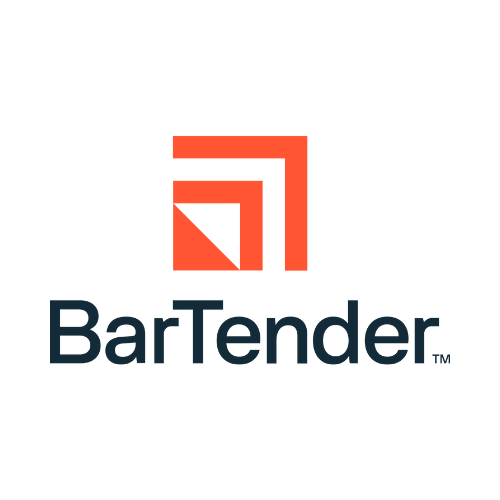Barcodes have moved from being simple tracking tools to being a key part of digital intelligence systems. Barcode accuracy is essential to lowering errors and improving compliance as supply chains get more intricate and factories become more data-driven.
A misprinted or unreadable barcode can trigger a chain of operational issues, from rejected shipments to compromised traceability, and even full recalls. That’s why companies across industries are prioritizing robust, adaptable barcode design systems as part of their quality control.
As quality and regulatory compliance become more digital, the ability to design, manage, and print error-free barcodes dynamically at any stage of the production process is no longer optional. BarTender enables manufacturers to meet these demands by embedding barcode integrity into the very fabric of their production and quality control workflows.
In this article, we will look at how BarTender can assist in fulfilling the requirements of barcode design to enhance quality control.
Barcode accuracy and product quality
Barcode accuracy has a direct and measurable impact on manufacturing quality. A single scan error can misroute inventory, use the wrong components during assembly, or reject a shipment. These small mistakes add up to expensive rework, customer dissatisfaction, and compliance risks.
BarTender addresses this by combining intelligent label design with enterprise-grade data connectivity. Whether labeling ingredients, work in progress items, or finished goods, the software ensures barcodes are generated correctly and reflect the most current, validated data from integrated systems like ERP, WMS, or MES.
Designing intelligent barcodes with BarTender
BarTender’s label design goes beyond traditional layout tools. It supports all major barcode symbologies, linear, 2D, and RFID, and allows users to create data-driven labels that adapt dynamically to their context. Manufacturers can define rules that govern how and when barcodes are populated, so each label is not only syntactically correct but also logically correct.
This is most important in environments with high SKU variability or rigorous compliance requirements. For example pharmaceutical companies must format their barcodes according to strict UDI standards, and food processors must label expiration dates and batch numbers clearly and accurately. BarTender enables both through Intelligent Templates, conditional logic, and extensive data formatting options.
Real-time barcode scanning for early defect detection
Barcode scanning is not just for shipping and receiving, it’s part of closed-loop quality control. By adding scan points throughout the manufacturing process, organizations can catch and correct errors before they go downstream. This is especially important in high mix, low volume environments where part-level traceability is critical.
For example, scanning barcodes on raw materials as they are received ensures the right items are logged into inventory and routed to the correct production lines. During assembly scanning barcodes confirms components match the bill of materials, preventing assembly errors. At final inspection, scanning barcodes validates packaging matches the product.
End-to-end quality workflows through integration
What sets BarTender apart is not just designing labels but being part of a larger manufacturing ecosystem. The platform connects to ERP, PLM, MES, and LIMS systems, pulling validated data in real time to drive labeling workflows. No more redundant data entry and no more misalignment between product specs and label content.
BarTender also supports event-based printing, where labels are generated automatically in response to process triggers such as inspection completion, part scan, or status change. These automation capabilities allow manufacturers to enforce labeling protocols as part of quality gates without manual intervention.
Security and compliance are built in. BarTender’s role-based access controls, electronic signatures, and change tracking support regulatory frameworks like FDA 21 CFR Part 11 and ISO 9001.
Global standardization with centralized label control
In multinational operations, maintaining consistency in barcode labeling is a nightmare. Regional teams use different templates, printer settings, or even barcode formats, risking scan failures and supply chain delays.
BarTender solves this with centralized label management through BarTender Cloud or enterprise server deployments. Organizations can define master templates and deploy them across all global sites, so no matter where you are or what printer you use, you get uniformity. Using BarTender Librarian and the BarTender System Database, version control, approval workflows, and audit trails are built into the labeling process.
Smart labeling for a smarter supply chain
BarTender’s value goes beyond the four walls of the factory. It plays a critical role in turning supply chains into responsive systems. Labels designed in BarTender can include IoT data, RFID, and serialized identifiers to track products in real time across the entire lifecycle, from production to point of sale.
Use cases:
- Asset traceability: Linking serialized barcodes to individual units for warranty tracking and service history.
- Inbound processing: Generating pallet and carton labels upon receipt with data tied to ASN or PO records.
- Line-side replenishment: Using barcode scans to trigger just-in-time inventory replenishment based on actual usage.
- Regulatory compliance: Applying industry specific standards like GHS, UDI, and GS1 in real time without user intervention.
By embedding this intelligence into the label itself, BarTender turns the label into an active part of the digital thread, not just a passive identifier.
Why quality-focused manufacturers choose BarTender
Across all these features, BarTender stands out with a platform that’s scalable, flexible, and compliant. From small batch to enterprise deployments, it allows manufacturers to:
- Design, approve, and print accurate barcode labels anywhere
- Minimize manual data entry and no more mislabeling
- Integrate labeling into quality gates and compliance audits
- Global consistency while supporting local adaptation
- Traceability, defect detection, and production visibility at every stage
Not surprising that Yaskawa, ALFAGOMMA, and Work Sharp use BarTender to manage thousands of label variations while keeping compliant and speeding up throughput. In Yaskawa's case, BarTender's Intelligent Template reduced template complexity by 90%, so a few templates can handle thousands of labeling scenarios, which streamlined operations and reduced labeling errors across their continuous improvement program.
As manufacturers move towards digital transformation and smart factory goals, platforms like BarTender are the foundation for a more connected, controlled, and quality-centric operation.






